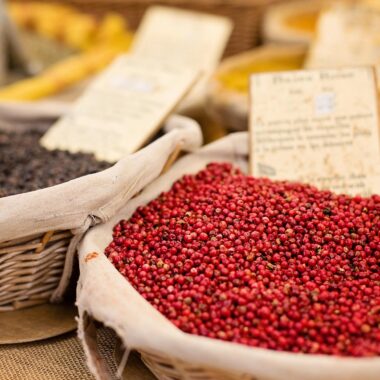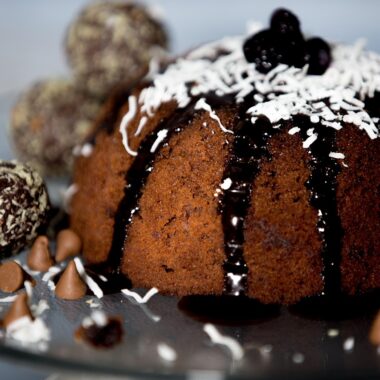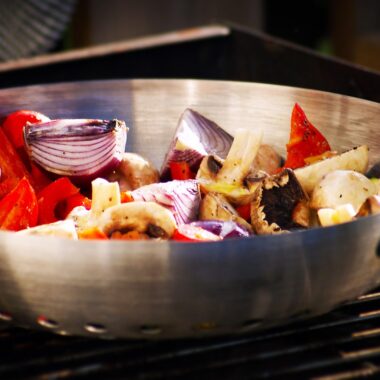Sourdough bread, with its tangy flavor, chewy texture, and rustic crust, has captivated bakers and food enthusiasts for centuries. Unlike commercial breads that rely on cultivated yeast for a quick rise, sourdough is a product of wild fermentation—a slow, natural process driven by a symbiotic community of microorganisms. This ancient method not only imparts sourdough with its distinctive character but also offers nutritional benefits and a deeper connection to the art of baking. To understand the magic of sourdough, we must explore the science behind fermentation, the role of its microbial players, and the chemistry that transforms simple ingredients into a loaf of bread unlike any other.
A Brief History of Sourdough
Before diving into the science, it’s worth noting sourdough’s storied past. Evidence of sourdough fermentation dates back to ancient Egypt around 1500 BCE, where it’s believed to have been discovered accidentally when wild yeasts and bacteria colonized a mixture of flour and water left exposed to the air. This “starter” became a cornerstone of breadmaking, passed down through generations and across cultures. Sourdough sustained gold rush prospectors in San Francisco—hence the famous San Francisco sourdough—and remains a symbol of artisanal craftsmanship today. Its resurgence in recent years reflects a growing appreciation for slow food and traditional techniques, but it’s the science behind this process that truly explains its enduring appeal.
The Basics: What Is Sourdough?
At its core, sourdough bread begins with a starter—a living culture of flour and water teeming with wild yeast and lactic acid bacteria (LAB). Unlike commercial baker’s yeast (Saccharomyces cerevisiae), which is a single, predictable strain, a sourdough starter hosts a diverse ecosystem of microorganisms that vary by region, flour type, and even the baker’s environment. This starter is used to leaven the dough, giving it rise, flavor, and structure through fermentation.
The ingredients for sourdough are deceptively simple: flour, water, salt, and time. No added sugar, no preservatives—just the alchemy of nature at work. But beneath this simplicity lies a complex interplay of biology and chemistry that sets sourdough apart from other breads.
Fermentation: The Heart of Sourdough
Fermentation is the process by which microorganisms metabolize sugars and other organic compounds to produce energy, releasing byproducts that shape the bread’s flavor, texture, and shelf life. In sourdough, two primary groups of microbes drive this transformation: wild yeasts and lactic acid bacteria. Together, they perform a delicate dance that unfolds over hours or even days, unlike the rapid rise of commercial yeast doughs.
Wild Yeasts: The Leavening Agents
Wild yeasts, predominantly species like Saccharomyces exiguus, Candida milleri, or Torulaspora delbrueckii, are naturally present in flour and the surrounding environment. These yeasts ferment the sugars in the dough—primarily glucose and maltose derived from the breakdown of starch—producing carbon dioxide (CO₂) and ethanol (alcohol). The CO₂ gas gets trapped in the dough’s gluten network, causing it to rise, while the ethanol evaporates during baking, contributing subtle flavor notes.
Unlike commercial yeast, wild yeasts work more slowly and are less aggressive, thriving in the acidic environment created by their bacterial partners. This slower fermentation allows for a longer development of flavor compounds, giving sourdough its depth.
Lactic Acid Bacteria: The Flavor Makers
While yeasts handle the leavening, lactic acid bacteria (LAB) are the unsung heroes of sourdough’s signature tang. Species such as Lactobacillus sanfranciscensis (named for its prevalence in San Francisco sourdough), Lactobacillus brevis, and Lactobacillus plantarum dominate most starters. These bacteria ferment sugars into lactic acid and, in some cases, acetic acid, which lend sourdough its mild or sharp sourness, respectively.
LAB come in two main types: homofermentative and heterofermentative. Homofermentative LAB, like Lactobacillus plantarum, produce mostly lactic acid, resulting in a milder, yogurt-like flavor. Heterofermentative LAB, such as Lactobacillus sanfranciscensis, generate lactic acid, acetic acid, ethanol, and CO₂, contributing a more complex and pungent taste. The balance between these acids depends on factors like temperature, hydration, and fermentation time, allowing bakers to tweak the flavor profile of their bread.
The Chemistry of Fermentation
To appreciate how fermentation works, we need to zoom in on the chemical reactions at play. Flour, the backbone of bread, is mostly starch—a complex carbohydrate made of glucose chains. When mixed with water, enzymes in the flour (amylase and maltase) break starch into simpler sugars like maltose and glucose. These sugars become the fuel for fermentation.
Yeast Metabolism
Wild yeasts metabolize glucose through glycolysis, a process that yields pyruvate. In the absence of oxygen (anaerobic conditions inside the dough), pyruvate is converted into ethanol and CO₂ via alcoholic fermentation:
- Glucose → 2 Pyruvate → 2 Ethanol + 2 CO₂
The CO₂ forms bubbles that expand the dough, while ethanol adds subtle fruity undertones to the flavor.
Bacterial Metabolism
LAB follow a different pathway. Homofermentative LAB convert glucose into lactic acid through the homolactic pathway:
- Glucose → 2 Lactic Acid
Heterofermentative LAB, however, use the heterofermentative pathway, producing a mix of lactic acid, acetic acid, CO₂, and ethanol:
- Glucose → Lactic Acid + Acetic Acid + CO₂ + Ethanol
Acetic acid, with its vinegar-like sharpness, is more potent than lactic acid, and its production increases in cooler, longer fermentations or with a stiffer (less hydrated) starter. This interplay of acids is what gives sourdough its nuanced sourness.
The Role of Gluten and Dough Structure
Fermentation doesn’t just flavor the bread—it shapes its texture. As yeast produces CO₂, the gas gets trapped in a network of gluten, the protein matrix formed when flour’s gliadin and glutenin combine with water. Kneading or folding the dough strengthens this network, ensuring it can hold the gas without collapsing. The slow fermentation of sourdough enhances gluten development over time, yielding a chewy crumb and a crisp crust.
LAB also contribute by breaking down some proteins and starches, making the dough more extensible and easier to digest. This partial degradation is one reason sourdough is often touted as more tolerable for those with mild gluten sensitivities (though it’s not safe for celiac disease sufferers).
Flavor Development: Beyond Acids
While lactic and acetic acids define sourdough’s sourness, fermentation produces a symphony of other compounds that elevate its taste. Esters, formed from the reaction of ethanol with acids, add fruity and floral notes. Aldehydes and ketones, byproducts of microbial metabolism, contribute nutty, buttery, or caramel-like aromas. The Maillard reaction during baking—where amino acids and sugars react under heat—further enhances these flavors, creating the golden-brown crust and its roasted complexity.
The diversity of microbes in a starter means no two sourdoughs are exactly alike. A starter from San Francisco might lean toward sharp acetic notes, while one from a humid rural bakery could favor milder lactic tones. This variability is part of sourdough’s charm.
Nutritional Benefits of Sourdough Fermentation
Beyond taste and texture, fermentation offers health perks. The long fermentation process reduces phytic acid, an “anti-nutrient” in grains that binds to minerals like iron and zinc, making them harder to absorb. LAB also pre-digest some starches and proteins, potentially easing digestion. Studies suggest sourdough’s lower glycemic index compared to commercial bread may help regulate blood sugar, thanks to the organic acids slowing starch breakdown.
Additionally, LAB produce antimicrobial compounds that act as natural preservatives, extending shelf life without additives. This aligns with sourdough’s minimalist ethos—just flour, water, salt, and nature’s microbes.
The Art and Science of the Starter
A sourdough starter is both a science experiment and a living entity. To create one, bakers mix flour and water and let it sit, feeding it daily with fresh flour and water to encourage microbial growth. Over days or weeks, wild yeasts and LAB colonize the mixture, stabilizing into a balanced culture. The starter bubbles and rises as CO₂ accumulates, emitting a tangy aroma when mature.
Maintaining a starter requires care. Temperature affects fermentation speed—warmer conditions (75–85°F) favor yeast activity and a milder flavor, while cooler temperatures (below 70°F) boost acid production for a sourer loaf. Hydration matters too: a wetter starter (higher water content) ferments faster and leans lactic, while a drier one tilts acetic.
Practical Fermentation in Baking
In practice, sourdough fermentation unfolds in stages. First, the starter is refreshed with a feeding to ensure it’s active. A portion is then mixed with flour, water, and salt to form the dough. The bulk fermentation follows, lasting 4–12 hours, during which the dough rises and flavors develop. After shaping, a final proof—often in the fridge—slows fermentation, enhancing sourness and making the dough easier to handle. Baking at high heat (around 450°F) with steam sets the crust and locks in the crumb structure.
Timing is key. Over-fermentation can exhaust the sugars, leaving a flat, overly sour loaf. Under-fermentation yields a dense, gummy crumb. Mastery comes with observing the dough’s cues—its volume, elasticity, and aroma.
Why Sourdough Endures
Sourdough’s allure lies in its fusion of science and soul. The microbes at its heart—wild yeasts and LAB—orchestrate a process that’s both predictable and wild, yielding bread that’s more than the sum of its parts. Fermentation unlocks flavors, textures, and nutrients that mass-produced loaves can’t replicate. It’s a reminder of our reliance on nature’s unseen workers, a slow rebellion against the rush of modern life.
As you slice into a crusty sourdough loaf, you’re tasting centuries of tradition and the quiet genius of microbiology. Whether you’re a baker nurturing a starter or a curious eater, understanding the science of sourdough deepens the appreciation of every bite. It’s not just bread—it’s a living, breathing testament to the power of fermentation.
Suggested References for Further Reading
Books
- Chad Robertson, “Tartine Bread” (2010)
- A renowned baker’s guide to sourdough, with insights into the practical and sensory aspects of fermentation. While not a scientific text, it reflects the principles discussed in the article.
- Michael Pollan, “Cooked: A Natural History of Transformation” (2013)
- Pollan explores fermentation broadly, including sourdough, with a blend of science, history, and narrative. See the “Air” section for bread-specific details.
- Ken Forkish, “Flour Water Salt Yeast: The Fundamentals of Artisan Bread and Pizza” (2012)
- This book delves into the techniques and science of natural leavening, offering practical applications of fermentation principles.
Scientific Articles and Studies
- Gobbetti, M., & Gänzle, M. (2013). “Handbook on Sourdough Biotechnology.” Springer.
- A comprehensive resource on the microbiology and biochemistry of sourdough fermentation, covering yeast and LAB interactions, acid production, and flavor compounds.
- De Vuyst, L., & Neysens, P. (2005). “The sourdough microflora: Biodiversity and metabolic interactions.” Trends in Food Science & Technology, 16(1-3), 43-56.
- This peer-reviewed article details the microbial diversity in sourdough starters and their metabolic contributions to bread quality.
- Poutanen, K., Flander, L., & Katina, K. (2009). “Sourdough and cereal fermentation in a nutritional perspective.” Food Microbiology, 26(7), 693-699.
- Explores the nutritional benefits of sourdough fermentation, including phytic acid reduction and glycemic index effects.
- Arendt, E. K., Ryan, L. A. M., & Dal Bello, F. (2007). “Impact of sourdough on the texture of bread.” Food Microbiology, 24(2), 165-174.
- Discusses how fermentation influences dough structure and bread texture, aligning with the article’s section on gluten and crumb development.
Online Resources
- The Bread Lab – Washington State University (https://breadlab.wsu.edu/)
- A hub for bread science research, offering insights into sourdough fermentation and grain properties.
- BBC Food – “The Science of Sourdough” (https://www.bbc.co.uk/food/articles/sourdough_science)
- A concise, accessible overview of sourdough’s microbial and chemical processes, corroborating the article’s explanations.
- King Arthur Baking – “Sourdough Baking Guide” (https://www.kingarthurbaking.com/learn/guides/sourdough)
- A practical guide with scientific tidbits about starters, fermentation, and baking techniques.
Historical Context
- Ed Wood, “World Sourdoughs from Antiquity” (1996)
- A historical exploration of sourdough’s origins, including its roots in ancient Egypt and its evolution through cultures.
- San Francisco Museum and Historical Society – “Sourdough Bread History”
- Available via various online archives, this provides context for the San Francisco sourdough tradition mentioned in the article.
General Microbiology and Chemistry
- Madigan, M. T., Martinko, J. M., Bender, K. S., Buckley, D. H., & Stahl, D. A. (2018). “Brock Biology of Microorganisms.” Pearson.
- A foundational microbiology textbook covering fermentation pathways (e.g., glycolysis, homolactic, and heterofermentative processes) relevant to sourdough.
- McGee, H. (2004). “On Food and Cooking: The Science and Lore of the Kitchen.” Scribner.
- A classic resource on food science, with sections on bread fermentation and the Maillard reaction.
Notes on Usage
- Citations in the Article: If you’d like to adapt the article with formal references, you could insert in-text citations (e.g., APA or MLA style) linking specific claims to these sources. For example, the microbial diversity could cite De Vuyst & Neysens (2005), while nutritional benefits could reference Poutanen et al. (2009).
- Verification: My knowledge aligns with these sources, but I synthesized the information into an original narrative without direct quotes. The science is grounded in established principles of microbiology and food chemistry as of February 21, 2025.


















